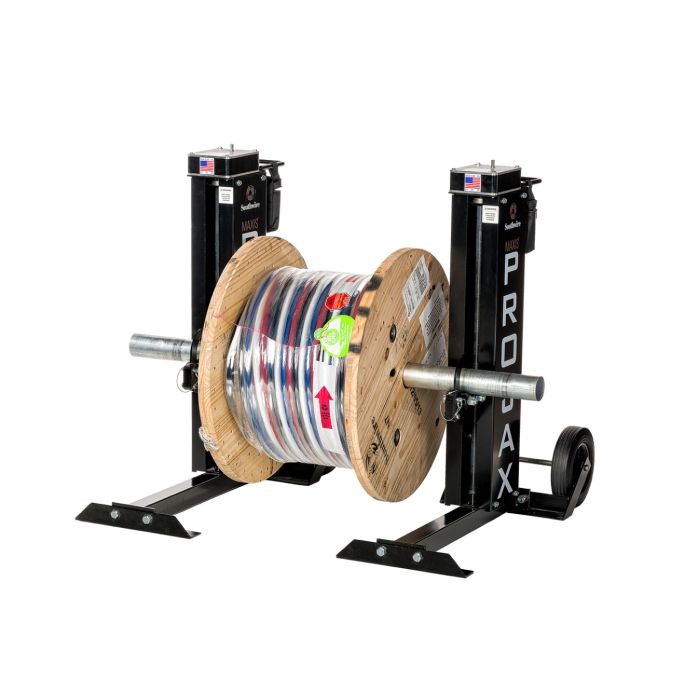Horsegoer, I hope by now you realize there isn’t a simple answer to your original question. As an estimator, use the labor rates that experts have developed over decades and move on. I can either spend money on manpower or equipment each step of the way and save or spend a little more, but it all averages out. Every wire pull is unique. In a similar vein to your question here are two examples I planned and executed.
500 foot pull of 500kcmil 100 feet inside building in EMT from wall mounted exterior box. From same box underground to a ground ha hole in the middle of mud then underground again to the bottom of gear in a new building. We set up a compartment reel (google wemco) plus ground at the exterior box, telescoping forklift with sheave at the ground box and tugger at the new gear. Tied off rope. Raised fork pulling in. Lower fork while using tugger and repeat until wire was in the gear. Then got a bunch of plywood to keep wire clean in mud. We pulled the last 100 feet off. Laid out in a figure eight and then set the tugger up at the door end of the EMT and pulled in from the exterior box. This required 5 guys when doing the last part of the pull.
See, quite complex but very unique.
Another time 15 runs of 350 KCMIL plus one pull of #1 RHW for a fire pump 240 feet from a utility transformer to new interior gear. I made sure we pulled before the transformer was set. I paid Southwire to set up all pulls parallel on reels with pulling heads crimped on the wires from the factory. Then set them up on a big rig ready to feed off from each side. That morning they pulled up one person hooked the first pull, one person ran the tugger, two people pulled in a second rope. Repeat it took 5 hours and 1 minute. I never forgot because I wanted to be done at noon and it was 12:01 I spent a lot of money on the truck the premade heads and a new rope, but it was impressive. With ground about 19000 feet of wire with 4 guys plus me equals 25 hours plus about 4 hours planning. I must mention, the owner and VP coming to watch and half the job standing around because it was so cool. So probably cost a little more LOL.


